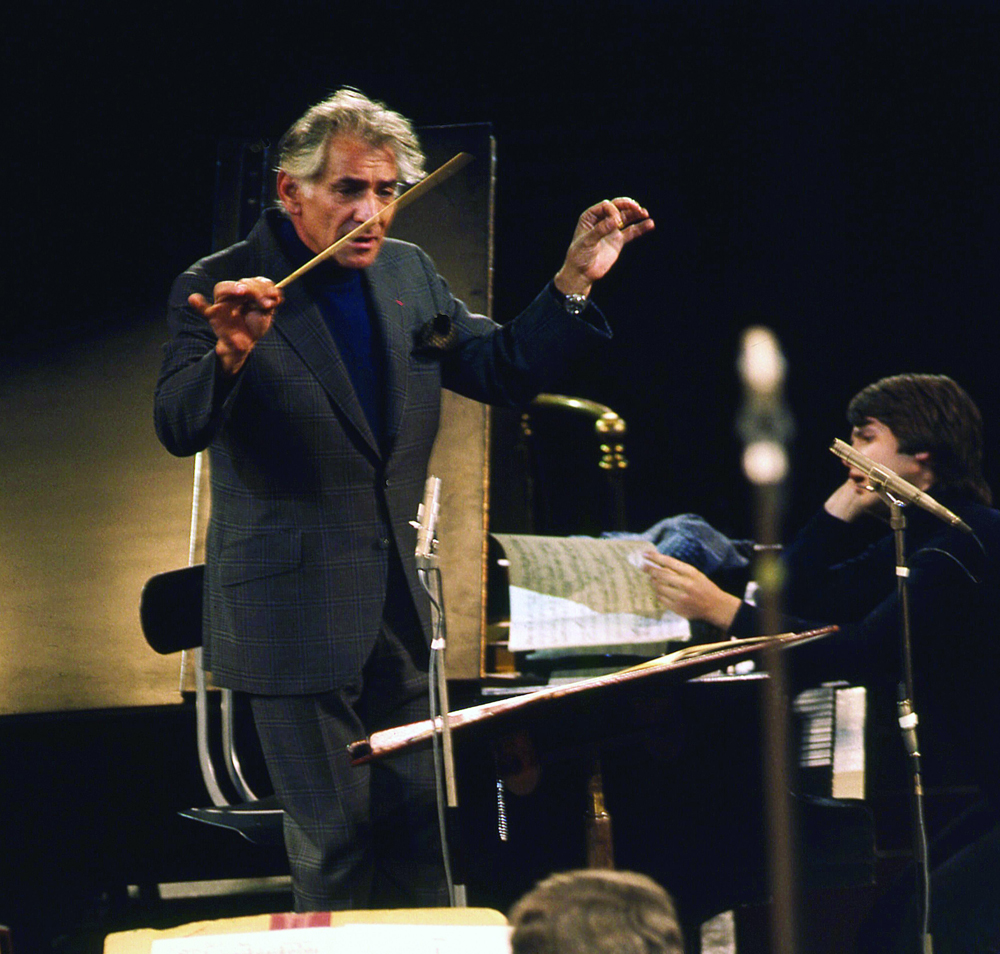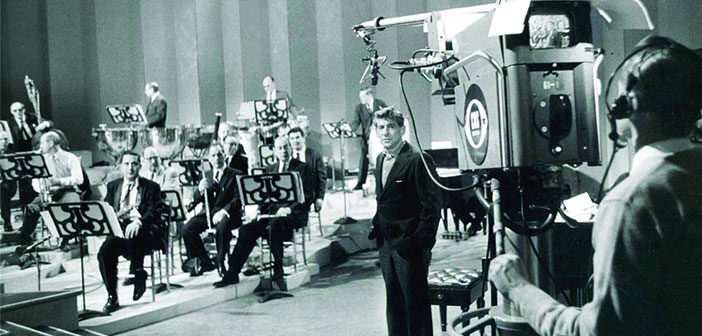
This page is also available in / Cette page est également disponible en:
![]() Francais (French)
Francais (French)
Leonard Bernstein steps off his podium and walks away from an orchestra in the throes of Brahms’s First Symphony. The musicians are now missing a conductor, but they don’t miss a single beat.
“You see? They don’t need me,” he jokes, shrugging to the camera. Dressed in a dark suit and with slicked-back hair, Bernstein begins narrating an episode of Omnibus, Alistair Cooke’s award-winning 1950s educational TV show. “So why is a conductor necessary after all? What does he do?”
Bernstein’s first brush with conducting taught him the necessity of having a good conductor. It was 1940 at Tanglewood Music Centre, and the 22-year-old prodigal musician had just joined their educational summer program to learn conducting from Serge Koussevitzky, who was the Boston Symphony Orchestra’s musical director at the time. His first assignment: conducting all of Randall Thompson’s Second Symphony.
“It was a huge thing to do for your first concert. It took a lot of doing,” Bernstein says in a 1980 interview at the Kennedy Centre. “I remember hiding in bushes studying the score so I wouldn’t be disturbed by friends or people walking by, learning this piece with all my might.”
He had trouble teaching the orchestra the 7/4 scherzo during rehearsals. Eventually, Koussevitzky, dressed in a “great cape” and watching from the side of the stage, chimed in.
“I remember Koussevitzky getting up and saying: ‘No, kinder, what (he’s) trying to tell you is … it’s three plus four’—missing the whole point of the syncopation. I didn’t say anything. It made it very much harder for me to teach them,” Bernstein says.
In the aforementioned Omnibus episode, Bernstein said the ideal conductor needs “a large amount of authority,” which he seems to have learned from the experience of being undercut by Koussevitzky. The conductor also needs a vast “psychological insight” in dealing with the orchestra, as well as an understanding of the intimate nuances of the music and an ability to communicate them.
It took Bernstein three years to become the “most famous conductor in America,” according to Neal Hampton, former conductor of the Brandeis-Wellesley Orchestra, in a 2018 State of the Arts article. When the conductor for the New York Philharmonic fell ill the day before a show, Bernstein, the then-assistant-conductor, was called in at the last minute.
“The concert earned Bernstein a front-page review the next day in The New York Times,” Hampton wrote. From then on, “he was known (and often criticized) for his extremely personal interpretations, the tempos of which became slower as he aged. It was as if he was trying to wring every drop of expressiveness from the music.”

Leonard Bernstein rehearsing at the Albert Hall (Photo by Allan Warren, circa 1973)
This level of expression was by design. The “eclectic” conductor was attempting to launch a “remedial agenda” for America in the hopes of improving its standing in the international orchestra scene, wrote Joseph Horowitz in the Washington Examiner.
“There were two critical objectives. The first was to identify and promote an American canon so that American orchestras would eventually emphasize American works. … The second objective was to carve a role for new music: There needed to be a contemporary canon, American and not, that audiences could embrace.”
This contemporary canon included Gustav Mahler, whose nine symphonies were banned by the Nazis after having already become obscure since the Jewish composer died in 1911. As Bernstein’s popularity grew in the 1960s, he decided to put his weight behind Mahler’s revival. He felt he had a strong understanding of the composer’s inner turmoils, based on his own lived trauma, the tensions between his Western and Eastern musical influences, and his need to be both a composer and conductor.
In a script for his Young People’s Concert series, one of the first few Mahler showcases he conducted, Bernstein writes: “I admit it’s a problem to be both a conductor and a composer; there never seems to be enough time to be both things. … It’s like being two different men locked up in the same body.”
Though Bernstein did not succeed in canonizing American works by the end of his time with the New York Philharmonic, his renditions of Mahler’s symphonies remain iconic. In a Tracking Angle review of Deustche Grammophon’s complete Mahler cycle, conducted by Bernstein, Michael Johnson described the interpretations as “expressive but not indulgent.”
“As anyone who has played a Mahler symphony can tell you, the composer is incredibly specific about what he wants in his scores, with numerous written German instructions on every line, and dynamics meant to weave between instruments. Bernstein follows these directions with intent, and because of that these performances have both intimacy and direction.”
In a review on a 1962 recording of Mahler’s Third Symphony, David Hurwitz of Classics Today wrote: “Bernstein catches the riotous vulgarity of the first movement march music like no other conductor—not even his own digital remake reaches the level of sheer abandon he whips up here.”
Hurwitz attributed the success of the performance to Bernstein, the conductor—not the musicians.
“Unlike the instrumentalist or the singer, (the conductor) plays on a whole orchestra,” Bernstein says in the Omnibus episode. He gestures to the right, willing the camera to pan toward the musicians, and the music swells as he saunters back in front of his podium. He’s not just any conductor; he’s the conductor. “His instrument is a hundred different human instruments, each one a thorough musician with a will of his own. It is his job to cause them to play like one instrument with a single will.”
The musicians don’t miss a beat without him. But they miss Bernstein’s single, unified will.
Playlist
This page is also available in / Cette page est également disponible en:
![]() Francais (French)
Francais (French)















